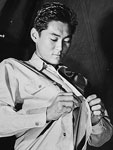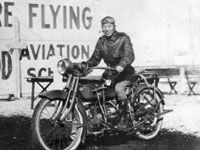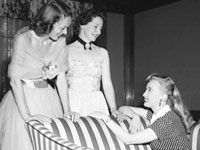Resources for Asian Pacific American Heritage Month
Every May, the U.S. observes Asian Pacific American Heritage Month. Americans whose families had roots in the nations of Asia and the Pacific Islands have experienced and shaped U.S. history in many ways. Teachinghistory.org's resources can help you explore these experiences with your students.

We've gathered together website reviews, lesson plans, quizzes, teaching strategies, primary sources, and more on our Asian Pacific American Heritage Month spotlight page. Available year-round and constantly expanding, this page, like our other spotlight pages, is a valuable resource you can turn to for materials and inspiration.
Here are some suggestions for other ways to inspire your teaching:
- Follow links from the Library of Congress's Asian Pacific American Heritage Month gateway to exhibits and collections, audiovisual presentations, images, and teacher resources.
- Locate historic sites related to Asian Pacific American history with the National Park Service's resource guide.
- Uncover lesson plans, online exhibits, teacher guides, music, and more on the Smithsonian Institution's heritage month page.
- Scan an overview of data on Asian Pacific Americans in the U.S., courtesy of the U.S. Census Bureau.
- Retrace the journeys of early contact between the U.S., Asia, and the Pacific Islands with EDSITEment's lesson plans and suggested websites.
- Confront hardships and mistrust that many Asian Americans faced in the U.S., with resources from the Gilder Lehrman Institute of American History, including a lesson plan on Chinese immigrants and teaching resources on the imprisonment of Japanese Americans during World War II.
- Browse Asian Pacific American heritage booklists from Colorín Colorado.
- Honor the service of Asian Pacific Americans in the U.S. military. Both the Navy and the Army maintain pages highlighting Asian Pacific American service.
- Flip through the Smithsonian National Postal Museum's stamp album of stamps related to Asian Pacific American heritage.
- Review past presidential proclamations for Asian Pacific American Heritage Month from the White House.
- Read the stories of Asian Pacific Americans who immigrated to the U.S. and hear from Asian Pacific American authors on publisher Scholastic's Asian Pacific American Heritage Month hub.

 The lives and experiences of all groups in the U.S. overlap and intertwine with each other, and no group's history exists in isolation. Japanese American history didn't begin and end with World War II, nor did it exist in a vacuum. Enter the keywords "registration certificate 1942" into the search box at the
The lives and experiences of all groups in the U.S. overlap and intertwine with each other, and no group's history exists in isolation. Japanese American history didn't begin and end with World War II, nor did it exist in a vacuum. Enter the keywords "registration certificate 1942" into the search box at the  Both a Pacific Island and a U.S. state, Hawaii has a unique position for Asian Pacific American Month. Many different cultures come together here, including Native Hawaiian, Filipino, Japanese, Korean, and Chinese, among others, and it is one of only four states where non-Hispanic whites do not form the majority. Sources on the history of many of these groups can be found in the
Both a Pacific Island and a U.S. state, Hawaii has a unique position for Asian Pacific American Month. Many different cultures come together here, including Native Hawaiian, Filipino, Japanese, Korean, and Chinese, among others, and it is one of only four states where non-Hispanic whites do not form the majority. Sources on the history of many of these groups can be found in the 
